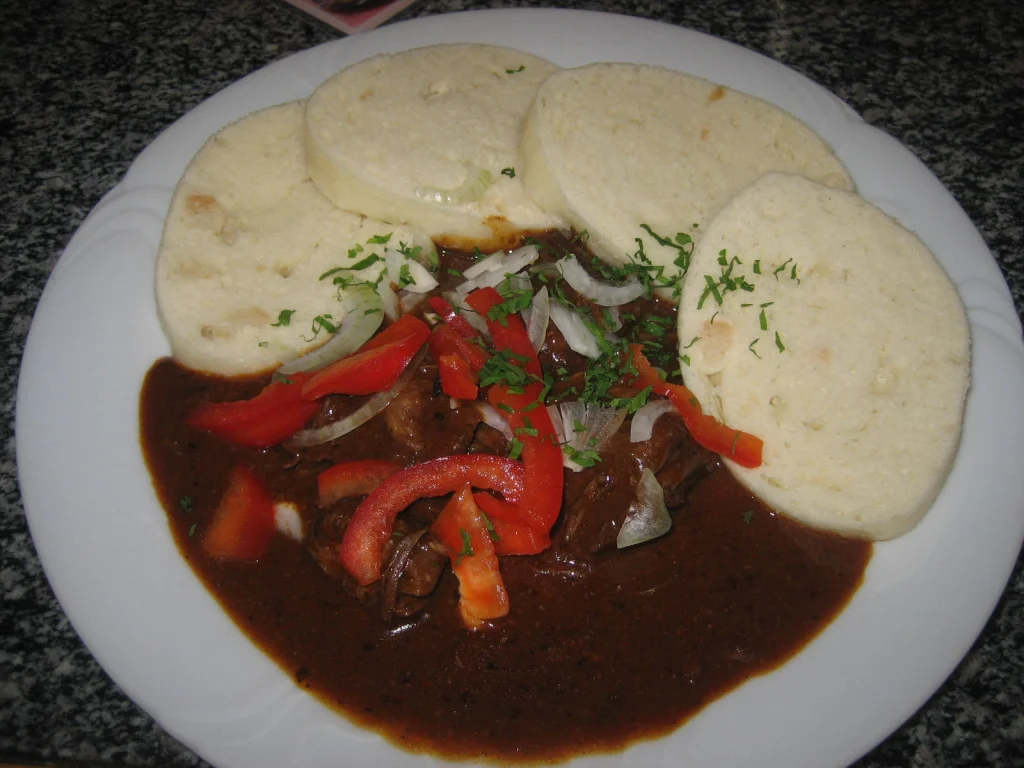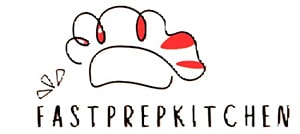The Best Fluffy Pancakes recipe you will fall in love with. Full of tips and tricks to help you make the best pancakes.
Looking for a hearty, comforting meal that’s full of flavor and tradition? This authentic Czech beef goulash is just what you need. Known as guláš in the Czech Republic, this rich and savory stew features tender chunks of beef simmered slowly with onions, sweet paprika, and aromatic spices. It’s a beloved dish throughout Central Europe, and every bite tells a story of rustic, home-cooked comfort. Whether you’re craving something cozy for a cold day or looking to explore Bohemian flavors, this easy and delicious recipe is the perfect place to start. Get ready to bring a taste of the Czech kitchen into your home!
What Makes Czech Beef Goulash Unique?
Czech beef goulash, or hovězí guláš, stands out from other European stews thanks to its rich, onion-based sauce, bold paprika flavor, and simple yet deeply satisfying preparation. While it shares roots with Hungarian goulash, the Czech version is typically thicker, heartier, and less spicy, making it a true comfort food staple across the Czech Republic.
One of the most distinctive features is the use of sweet Hungarian paprika—it’s not just a seasoning but the star of the dish, giving the stew its vibrant red color and warm, smoky aroma. Combined with caramelized onions, caraway seeds, marjoram, and garlic, the result is a sauce that’s both deeply savory and slightly sweet, with a complexity that builds during slow simmering.

Unlike Hungarian goulash, which often includes vegetables like bell peppers or potatoes, Czech beef goulash focuses mainly on tender beef chunks and a silky, spice-infused sauce. The traditional accompaniment? Knedlíky, or Czech bread dumplings, which are perfect for soaking up every last drop.
Lastly, Czech beer—especially Pilsner—sometimes finds its way into the pot, adding a subtle bitterness and rich depth that makes this dish even more uniquely Bohemian. It’s a dish that’s more than a meal—it’s a warm hug from Czech culinary history.
Ingredients You’ll Need for Authentic Czech Goulash
The beauty of Czech beef goulash lies in its humble ingredients that, when combined, create a rich and flavorful stew. Below are the essential components you’ll need to make an authentic Czech goulash recipe right in your own kitchen.
1. Beef Chuck or Stewing Beef
Use a well-marbled cut like beef chuck, which becomes tender and flavorful when simmered slowly. Avoid lean cuts, as they may dry out during the long cooking process. Cube the beef into bite-sized pieces for even cooking.
2. Onions – The Flavor Base
Czech goulash relies heavily on a generous amount of onions, sometimes equal in weight to the beef itself. The onions cook down slowly, creating the dish’s signature thick and savory sauce. Yellow onions are traditional, but white onions can work too.
3. Sweet Hungarian Paprika
This is the most defining spice of Czech goulash. Sweet paprika gives the dish its vibrant color and warm, earthy depth. For the most authentic flavor, use high-quality Hungarian sweet paprika—and don’t be shy with it!
4. Garlic, Caraway Seeds, and Marjoram
These spices bring complexity and regional authenticity to the dish.
- Garlic adds a subtle pungent note.
- Caraway seeds provide a slightly nutty, anise-like flavor.
- Dried marjoram offers a sweet herbal touch that balances the richness of the beef and onions.
5. Tomato Paste or Crushed Tomatoes (Optional)
Some Czech households add a spoonful of tomato paste to enhance the umami and give the stew more body. This is optional but recommended if you like a slightly deeper sauce.
6. Beef Broth or Water
A rich beef stock or broth forms the liquid base of the stew. If you’re going for a more traditional approach, water works fine, especially when the meat and onions are well-browned.
7. Czech Beer (Optional but Recommended)
For an extra depth of flavor, consider adding a splash of Czech Pilsner or lager. The beer adds a subtle bitterness and authentic touch to the dish—just be sure to let it cook down to mellow the flavor.
8. Salt and Black Pepper
Finish the dish with simple seasoning—sea salt and freshly ground black pepper—to taste. Let the bold ingredients shine without overcomplicating.
Step-by-Step Instructions for Making Czech Goulash
Making authentic Czech beef goulash may seem intimidating at first, but the process is actually quite simple. The key is taking your time—especially when it comes to caramelizing the onions and slow-cooking the beef. Follow these step-by-step instructions to get a rich, flavorful result every time.
1. Prepare and Brown the Beef
Start by cutting your beef chuck into evenly sized cubes, about 1 to 1.5 inches. Pat the meat dry with paper towels—this helps achieve a better sear.
Heat oil or lard in a large heavy-bottomed pot or Dutch oven over medium-high heat.
Working in batches, brown the beef on all sides. Don’t overcrowd the pot. This step is essential for developing deep flavor through the Maillard reaction.
2. Cook Down the Onions
Once all the beef is browned and set aside, reduce the heat to medium. Add more oil if needed, then toss in the thinly sliced onions.
Cook slowly, stirring often, until the onions are deeply golden brown and caramelized. This may take 15–20 minutes, but it’s a crucial step that gives Czech goulash its velvety base.
3. Add the Spices and Tomato Paste
Once the onions are browned, stir in the minced garlic, caraway seeds, dried marjoram, and paprika (off heat briefly to avoid burning the paprika).
If using tomato paste, add it now and cook for 1–2 minutes to deepen the flavor.
4. Deglaze and Simmer
Return the browned beef to the pot. Deglaze with a bit of Czech beer or beef broth, scraping up any brown bits from the bottom of the pot.
Add enough broth or water to just cover the beef. Bring to a boil, then reduce to a gentle simmer.
Cover partially and simmer for 1.5 to 2 hours, or until the beef is fork-tender and the sauce is rich and thick.
5. Adjust and Finish
Once the goulash has thickened and the beef is soft, taste and adjust seasoning with salt, pepper, and a pinch more marjoram if desired.
If the sauce is too thin, simmer uncovered for another 10–15 minutes.
For an even silkier texture, some cooks stir in a bit of flour or cornstarch slurry—but traditionalists often let the onions thicken it naturally.
Serving Suggestions and Traditional Sides
One of the best parts of enjoying Czech beef goulash is pairing it with traditional sides that soak up all that flavorful, paprika-rich sauce. Whether you’re aiming for a classic Czech presentation or a simpler home-style meal, these serving ideas will elevate your dish and make it feel truly authentic.
1. Czech Bread Dumplings (Knedlíky)
The most iconic and beloved side dish for Czech goulash is knedlíky—soft, fluffy bread dumplings that are sliced and arranged under or beside the stew.
They are perfect for soaking up the thick goulash sauce and are often made with flour, eggs, milk, and stale bread cubes.
If you’re going for full authenticity, these are a must. You can find pre-made versions in some European markets or make them at home with a bit of practice.
2. Crusty Bread or Rye Loaf
If dumplings feel too ambitious or time-consuming, a good piece of crusty white bread or dense rye bread will also do the job.
The hearty texture of the bread pairs beautifully with the tender beef and helps mop up the sauce—a satisfying, rustic experience that’s popular across Central Europe.
3. Boiled or Mashed Potatoes
Another common side served with Czech goulash is simple boiled potatoes or creamy mashed potatoes.
They don’t steal the spotlight but complement the stew well, especially when topped with a spoonful of sauce.
For added flavor, you can toss boiled potatoes with butter and parsley.
4. Pickled Vegetables or Fresh Onion Garnish
To contrast the rich, meaty stew, some people like to serve goulash with a side of pickled cucumbers, sauerkraut, or even sliced raw onions.
In Czech pubs, it’s not uncommon to see goulash served with a garnish of raw onion rings and a sprinkle of fresh marjoram.
This brightens the dish and adds a bit of crunch.
Bonus: Pair with a Czech Beer
No Czech goulash is truly complete without a glass of Pilsner lager or another Czech beer like Staropramen or Budvar.
The light bitterness and carbonation of the beer balance the rich, savory stew and make for an authentic dining experience—just like in a Prague pub!
Tips for the Best Flavor and Storage
Mastering Czech beef goulash is all about the little details—from how long you simmer it to how you store leftovers. These tried-and-true tips will ensure your goulash is full of flavor and easy to enjoy later on.
1. Let It Rest Before Serving
One of the best-kept secrets of Czech goulash is that it tastes even better the next day. After cooking, let the stew rest for a few hours or overnight in the refrigerator.
This allows the flavors to meld and deepen, especially the paprika and spices. When reheated, the sauce becomes even richer and more satisfying.
2. Use High-Quality Paprika
Since sweet Hungarian paprika is a core ingredient, using a fresh, high-quality version makes a noticeable difference.
Look for deep red, fragrant paprika—avoid older, faded powders that have lost their potency. If you’re feeling adventurous, you can even blend in a small amount of hot or smoked paprika for extra depth.
3. Simmer Low and Slow
The key to tender beef and a luxurious sauce is low and slow cooking. Don’t rush it!
Letting the goulash simmer gently for 1.5 to 2 hours ensures the meat breaks down beautifully and the onions fully dissolve into the sauce. If you’re short on time, consider making it in a slow cooker or pressure cooker.
4. Avoid Burning the Paprika
Paprika is sensitive to high heat and can turn bitter if scorched.
Always remove your pot from heat briefly before adding paprika, and stir it in with the other aromatics (like garlic and marjoram) before returning to the stove. This preserves its sweet, earthy flavor.
5. How to Store and Reheat Leftovers
Czech goulash stores beautifully and is ideal for meal prep.
- Refrigerate leftovers in an airtight container for up to 4 days.
- Freeze for up to 3 months—let it cool completely first.
- Reheat gently on the stovetop over low heat or in the microwave, adding a splash of broth or water if the sauce thickens too much.
6. Make a Double Batch
Since the flavor improves with time, consider doubling the recipe and freezing portions for later. It’s a lifesaver on busy days and still tastes like it was made fresh.





